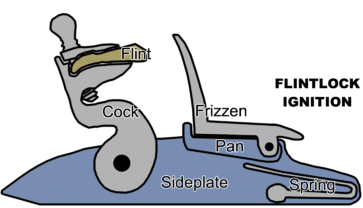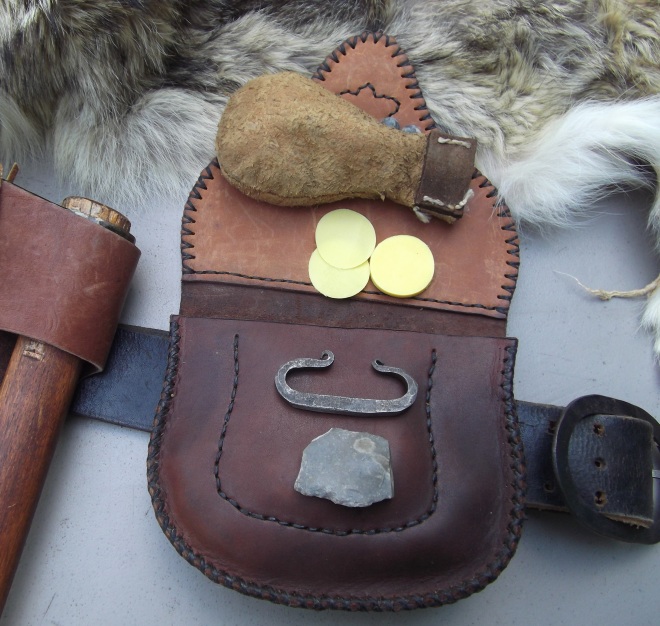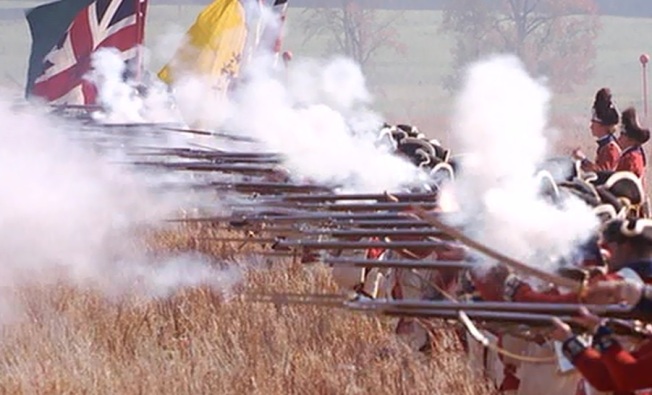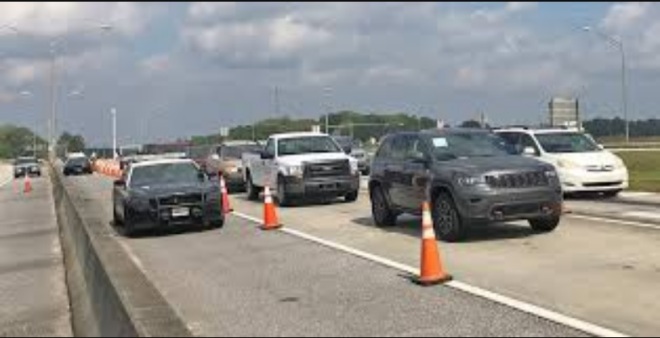
Anyone know the significance of this rifle
While growing up, I was fascinated with the era between the French and Indian War, and the Civil War. I’m a fan of all types of historic blackpowder firearms, but at that time, I was enamored with the breechloading 1859 Sharps Berdan rifle. In comparison to today’s rifles, it was the M14 DMR of it’s era.

1859 .54 caliber Sharps Berdan Rifle
OK, enough of the childhood nostalgia. So JC, why is a flintlock blackpowder firearm important in your survivalist preps? Well, I’m glad you asked. First, we know that your ammo storage for your cartridge firearms is not limitless, right? Second, if you’re going to be hunting for your food as well as trapping it (you do have your supply of conibear traps and snares acquired, right?), which would you rather use for that hunting firearm? One that uses ammo that will eventually run out, or one that has the ability to scrounge all the items needed to reload it?

I’m a big fan of carbines, but this just isn”t practical for a SHTF hunting scenario
In this post we are going to talk about flintlock firearms. What about percussion firearms JC? Well, considering that the only difference between the needed items for percussion and cartridge firearms is a percussion cap or a primer (the original cartridge firearms used black powder, that’s what the last number in 30/30, 45/70, 44/40, etc. means, That’s the blackpowder charge weight in grains), and the addition or subtraction of a brass cartridge, it doesn’t have the versatility of a flintlock.
Flints (the ignition source) are able to be found in nature, something that can’t be said about percussion caps or primers. Blackpowder (and substitutes) can be made at home if you do your homework. Yes, I know you can reactivate primers (percussion caps usually blow apart), but the process is too much to put effort into for a hunting gun, considering that flintlock firearms are available.
First, let’s look at how the flintlock system works, and what the major parts do in that system. The primary parts are the hammer with flint attached, the frizzen that the flint/hammer combination strikes to create the shower of sparks, and the pan which holds the blackpowder that is ignited by the sparks created by contact between the flint and frizzen. That spark goes through a flash hole touching off the charge in the barrel behind the ball. I’m not going to get into minute details about the ignition system, but suffice it to say that it works well.

Next, we’ll talk about the system that holds the bullet. There are two types of of barrels, smoothbore and rifled. The flintlock rifles at the top of the post are a .69 caliber smoothbore along with the .66 caliber Paget carbine. Along with being a breech loading system, the Sharps Berdan rifle pictured is a rifle .54 caliber percussion system. The flintlock firearms I use are rifled, but I have a friend who uses a 62. caliber (20 gauge) Trade Gun to hunt everything from squirrel to deer.

The advantage of smoothbores is the same as modern shotguns. The variety of loads that can be fired from a shotgun is hard to beat. In this case, you can load shot (small, medium game), Ball (big game, and defense if needed), or buck and ball (generally for defense). As I said, they are like a shotgun in their versatility, but the downside to a smoothbore shotgun is accuracy at range, and it applies in this case as well. Smoothbores also take longer to foul than rifled barrels, which in turn fouling makes it harder to load (this is one of the reasons most military arms were muskets back then)

Note the muzzle end of this guys rifle in “Jeremiah Johnson”. It is a combo gun, which has a rifled barrel on the left and a smoothbore shotgun on the right.
When it comes to rifled barrel flintlocks, your long range accuracy is only limited by your mastery of the system (they call it a “flinchlock” for a reason), shooting capability, the type of bullet/load you use (patch thickness, the ball or conical bullet’s concentricity, etc.), the type of action (set trigger or not), and the sights (buckhorn or peep) you use. The primary benefit of a rifled flintlock is placing a bullet accurately on target at distance.

Lyman .50 caliber Plains Rifle (left handed), and a Pedersoli .50 caliber Kentucky pistol.
On to the point of this post. I have used flintlock firearms for well over 25 years now, and although they have their quirks, if you take the time to learn the “in’s and out’s”, I believe they will do what you need them to do in a SHTF survival situation. I’m a big fan of .50 calibers. First, I like the Fifty cal. because it is big enough to get the job done on large game (round ball is 188 grains in weight), when smaller calibers start to fizzle out (it’s like comparing a 12 and 20 gauge). Second, when it comes to cleaning supplies, you can use a number of the brushes, patches, etc. that you will find as surplus for military .50 cal weapons.

Here are the different blackpowder granule sizes. Note that the .50 caliber is the only caliber where it is recommended to use FFg or FFFg
Third, the .50 caliber is what I call the “transitional” blackpowder caliber when it comes to what size powder you use in a given caliber (I also use FFFg in the pan). This gives you more versatility with what you can use after SHTF. I have used Conical type (aka Maxi balls) bullets through my muzzleloaders that had the correct rifling twist for it, and I wasn’t all that impressed. I also don’t want to plan on using conicals because they usually weigh double and use twice as much lead as a round ball does (not as efficient). I have and have used conicals from this mould.

These are some basic load guidelines
When considering twist rates, generally there are three that I’ve used in rifles. 1-66″ is for roundball, and does very well with them, but sucks with anything else. 1-48″, which does acceptably with both round ball and conicals. and 1-32″, which is designed for modern bullets and higher velocities (1-18″ is a rifling twist for pistols). I personally use the 1-66″ twist. Although the 1-48″ seems to be the best for versatility, I don’t plan on using conicals, and if I had gotten hold of some, I’d recast one conical into two round balls.

I will briefly discuss sights for the flintlock. I am a huge fan of the peep sight, but on both of my flintlocks, I have open sights. The Lyman Plains Rifle has an adjustable buckhorn rear/blade front sights, and the pistol has standard fixed notch/blade type sights. I use these guns for hunting and have found that open sights do much better for low light (seems like the majority of my shots are at dusk) than peep sight, it’s that simple, but your mileage may vary.


One of the best things to have on a rifle of this type is a set trigger. Shooting at 50 to 100 meters with the standard trigger is do-able, but using the set trigger makes that offhand shot (when you have the time) a lot more accurate, and what’s not to love about accuracy. I recommend that if the rifle you are looking at getting is available with a set trigger, it is a “no brainer”. The last thing I will say about something that you need in a flintlock rifle is a subdued finish. If you look at the rifle above, you will notice that it blends in. This is one of the reason I’m a big fan of Lyman products.

This is a Pedersoli Kentucky Flintlock in .50 caliber. The patch knife is home made from a file, deer antler and fake sinew.
Anything a pistol can do, a rifle can do better except for two things, be concealable, or in this case, be convenient to carry. Is this pistol a deer killer? No, this one is not, at least not yet anyway, but I have a friend that has taken deer with his (all he hunts with are pistols). it is relatively accurate up to 50 meters (off a good rest, hits minute of deer vitals), and has the most comfortable grip ever designed.

“Possibles Bag” Left to Right: Tin cup, flint and steel fire starter (bottom), .50 cal ball mould, 25x monocular, Tin has extra flints, and an extra rifle frizzen. Deer antler with extra fake sinew thread and needle, magnifying glass, scissors, patch knife (bottom), ball starter, and large fixed blade knife.
Next, let’s talk about accessories. What do you need for your flintlock firearm? I use to be into re-enacting, and going to “Rendezvous”, so I have more than what is absolutely necessary of the “Old style” gear. You will need something to carry your roundballs and patches, something to carry your black powder, and something to carry maintenance equipment.

Belt pouch has another flint and steel fire starter (redundancy), pre cut rifle patches, and a round ball holder.
For the roundballs and patches, my old style kit has them in a belt pouch so the are on you even if your “possibles” bag isn’t. For the black powder, my old style kit uses a powder horn with horn measure (remember, I use FFFg powder for the pan and the barrel).

Last but not least is the powder horn with matching powder measure. The coyote pelt is actually a hat from my “rendezvous” days.

The powder measure is just dremeled out till it hold the quantity of powder you need for a load.
When I talk about maintenance equipment, there are a number of thing you will need. Tools for taking your firearm apart (either a multi-tool, or something specific for the task). You will need a cleaning jag, a patch puller and a ball puller. Most ram rods will have a threaded end to accept these accessories, and if they don’t, get a military cleaning rod, and a 10/32 adapter. You will need a pick for your flash hole I have an old style one, but I usually use a big safety pin, and I can just pin it in the bag.

When it comes to modern era kit, this is it. A military surplus canvas buttpack with shoulder strap for the “Possibles” bag, and an East German 4 mag AK pouch for my belt pouch.

I keep my accessory kit handy in case i have a bad charge and have to pull a bullet. The powder flask with measure is behind that. and the balls (and percussion caps if using an In-Line) are in the left side pouches.
For my modern blackpowder kit (whether In-Line or Flintlock), I use a US surplus buttpack for the “Possibles” bag. The advantage to this instead of the old version gas mask bag I showed in this post is the buttpack will conveniently carry a poncho underneath for easy access in inclement weather. The leather “Old style” belt pouch is replaced with a East German surplus 4 AK mag pouch. This pouch has four inside divided compartments to hold different things, and keep them separate.
I replace the powder horn with a brass powder flask which has a powder measure attached to the end that is sized to my load. My accessories kit is kept in a US surplus cleaning kit pouch, and I have the adapters to use the cleaning and maintenance equipment with a GI issue cleaning rod.
There are some things you need to square away regarding your blackpowder guns. First, you need to practice a lot to get the steps down pat, so when you need to perform them, it is second nature. This site shows the basics of loading your flintlock. Second, know your firearm’s specs and understand it. Here is the Lyman guide for using blackpowder guns. Third, PRACTICE!

Some disadvantages to blackpowder firearms. First, they let everyone know exactly where you are due to a huge smoke cloud. Second, due to that smoke cloud, it makes it hard to see after you’ve fired. Third, they are slow to reload (especially if you haven’t practiced!). Fourth, THEY ARE UNFORGIVING IF YOU DO NOT CLEAN THEM AS SOON AS POSSIBLE! Blackpowder is hygroscopic, and will bugger up your barrel in no time if you don’t clean it. You should already be fastidious in cleaning weapons and tools. Blackpowder guns require that in spades.
These are just my thoughts on the use of the blackpowder flintlock firearms system in a SHTF scenario. There are a number of good resources out there to get you on you way in that hobby, and if you’ll note, I didn’t give you my load data. That’s for a reason. Blackpowder guns are picky, and what works in mine won’t necessarily work in yours. Do you research, and have fun. It’s a cool hobby to get into. This guy has some good advice on using flintlocks, that will get you on you way. Hell, even Ex-Felons can own one of these because it’s not considered a firearm, and is legal for them to own.

By the way, the rifle at the beginning of the post was a 1795 Springfield. Anyone know the significance of that rifle to an Infantryman?
JCD
"Parata Vivere"-Live Prepared.









































